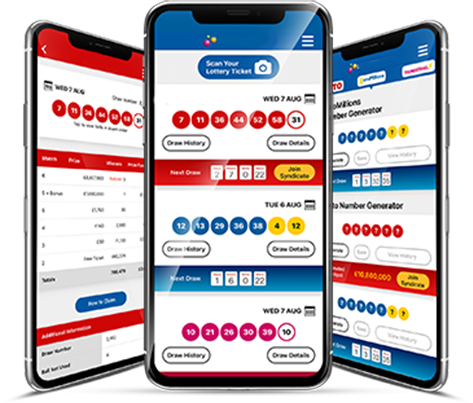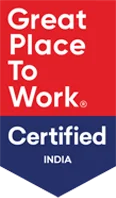Success Story
Automation Testing for a UAE based lottery application
Services Used:
The client is one of the leading gaming solutions companies in the UAE which strives to provide a legendary experience for players through engaging and innovative online games. The client leverages an extensive betting menu, providing users with a comprehensive statistics on live games and those scheduled for future dates. The client plays an active role in encouraging people to achieve their dreams through projects, including funding scholarships, disability and various cancer societies.
- 99% reduction in test execution time
- 40% improved productivity as compared to manual QA
- 1.8 s average response time
The Situation
The lottery application was expected to cross a user base of 1 million and receive a concurrent load on several web pages before and during lottery announcements. That is why load testing followed by balancing and autoscaling of resources were the crucial aspects of the application performance.
To improve the responsiveness of the application and its availability during high traffic, it was important to test the system performance under stressful scenarios. Moreover, it was necessary to ensure that application complexity and frequent releases do not affect the time-to-market.
Considering these requirements, the following were the key areas of responsibility for the QA and testing team:
- To ensure reduction of defect leakage from unit to functional testing by applying QA processes
- To reduce regression time for faster time to market
- Safeguard the application from the top 10 OWASP vulnerabilities.
- Ascertain the high performance (load and stress testing) of the application
- Create comprehensive reports on the performance of the application
- Usage of cost-effective and performance-oriented tools for testing
The Solution
Setting up QA processes
Working within the Agile framework, the QA team started by creating a test suite of over 1000 test cases to verify the functional requirement of the application in the first place. After a thorough requirement analysis, a test plan was generated to identify the right approach for testing.
As the development progressed and the application became complex, our QA experts started planning the regression cycles to ensure that the existing features are not affected by the change. Regression testing was performed to check any dysfunction in UI and features after every update.

Load Testing & Reporting
Since the application was expected to receive a high load of concurrent users, it was important to test functional behavior and system capacity in a simulated environment. The requirement was to test the load on the entire scenario and record server breakdown time. This was done through API load testing using Apache Jmeter.

Report Analysis and Load Balancing
Based on load testing in a simulated environment, a report was generated, analyzed, and shared with the DevOps team to adopt the right approach for balancing the load on the server.
Load balancing ensures that the network traffic is distributed evenly across multiple servers and the flow of information between the servers and an endpoint device happens seamlessly and in a fraction of time. Moreover, the resources on the server were required to be optimized to manage the fluctuating demand.
To balance the load, server optimization was done several times till a favorable response time was received. Some of the high traffic pages such as the login page, play lottery, shopping & billing page, lottery result display page, etc. were continuously analyzed for threads/ramp-up time in Jmeter.

Automation Testing & OWASP Vulnerability Test
To enable the efficient testing process of multiple use cases and peak loads Daffodil’s team of QA experts set up an automation testing infrastructure using Selenium. The application has been orchestrated to handle more than 50,000 concurrent users at a time. The concurrency can be stretched to 100,000 users within a matter of a few clicks. To accelerate the testing cycle, automation test scripts were written in javascript language using Selenium. Test scripts for business-critical features such as login page, forgot password, lotto play, buy collectibles, favorite numbers, recent order place, scratch code, entries, delete the account, claim to file, etc. were created. Through automation scripts, it was ensured that some of the highly utilized web pages or features of the application are continuously checked for dysfunction, which significantly reduces the chances of bugs and errors in related features. The application was tested for OWASP top 10 vulnerabilities through SonarQube.

The Impact
The QA services provided by Daffodil software improved server configuration after reports analysis which significantly optimized system performance. This resulted in an optimized application with an average response time of 1.8 seconds for 10K concurrent users. We ensured a reduction in regression test cycle time from 7 days to <2 days through automation testing. It also reduced the error rate by 99% resulting in reduced cost & time associated with project testing. The automation also resulted in shorter regression cycles which significantly reduced the time-to-market as well as 40% productivity improvement through a well-defined testing approach that included manual regression and automation testing.
- 99% reduction in test execution time
- 40% improved productivity as compared to manual QA
- 1.8 s average response time
“I am extremely happy to share that the demo and training session of approx.400 people went ROCKING today ! Thanks for your support and efforts put in for today’s event! Thanks once again!”
Senior Project Manager
Read Related Case Studies
Get in Touch
Sign up for a 30 min no-obligation strategic session with us
Let us understand your business objectives, set up initial milestones, and plan your software project.
At the end of this 30 min session, walk out with:
- Validation of your project idea/ scope of your project
- Actionable insights on which technology would suit your requirements
- Industry specific best practices that can be applied to your project
- Implementation and engagement plan of action
- Ballpark estimate and time-frame for development








